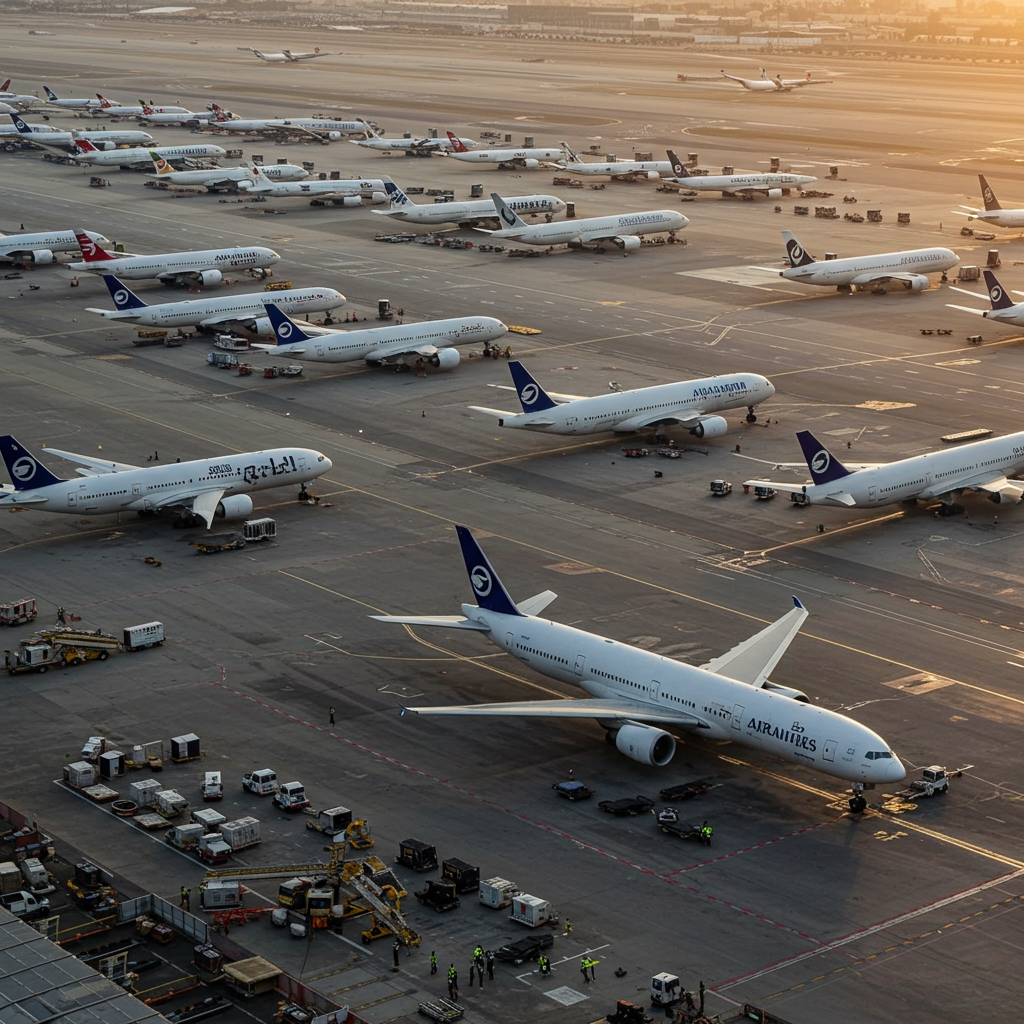The engine of the U.S. auto market appears to be sputtering. Following a brief, tariff-fueled buying frenzy, car sales lost significant momentum in June 2025. This abrupt slowdown signals the market is facing underlying challenges. Experts warn that temporary demand has faded, revealing deeper issues like worsening affordability. This shift marks a significant turning point for the automotive industry heading into the second half of the year. The springtime surge, driven by consumers anticipating price hikes, has clearly run its course.
The Springtime Sprint: A Tariff-Driven Anomaly
Earlier in the year, particularly through April and May, U.S. auto sales experienced an unexpected boost. This surge wasn’t necessarily due to robust economic fundamentals. Instead, it was largely driven by a “pull-forward” effect. Consumers rushed to dealerships, motivated by the specter of impending tariffs proposed by President Donald Trump. The logic was simple: buy now before potential taxes on imported vehicles and parts push prices sky-high.
Major automakers initially benefited from this rush. General Motors Co. reported a healthy 7.3% increase in deliveries during the second quarter. Ford Motor Co. saw an even stronger 14% jump in Q2 sales. Ford’s performance was aided, in part, by a popular employee-pricing discount program offered to all buyers. However, even within these positive quarterly figures, the pace of growth began to moderate noticeably as June progressed.
June’s Sharp Reversal: The “Hangover” Hits
As anticipated, the temporary pull-forward effect eventually subsided. What followed was a sharp deceleration in sales momentum across the industry in June. This sudden cooling was particularly evident when looking at monthly figures compared to quarterly totals.
Hyundai: While Q2 deliveries rose a solid 10%, June growth plummeted to just 3%. This was a stark contrast to the brisk 19% growth seen in April.
Toyota: Sales increased 7.2% over the April-June quarter but were essentially flat in June.
Subaru: June deliveries dropped significantly, falling 16%.
Kia: Experienced a 3.2% dip in June sales, limiting its overall Q2 gain to just 5%.
- Nissan: Sales fell 6.5% over the most recent three-month period.
- www.supplychainbrain.com
- finance.yahoo.com
- news.bgov.com
Industry data confirms this nationwide trend. J.D. Power estimated that the tariff anticipation specifically contributed about 2.5% to the estimated second-quarter sales increase year-over-year. However, June painted a completely different picture. The annualized automotive selling rate, a key metric tracking market pace, likely fell to 15 million units in June. This represents the slowest pace recorded in the preceding 12 months and is a dramatic drop from the 17.6 million rate observed just two months prior in April. Consultant AlixPartners aptly described the June slowdown as a “hangover” resulting from those previously pulled-ahead sales.
Deeper Cracks: Affordability and Economic Caution
While the dissipation of the tariff-induced buying spree is the immediate cause for the slowdown, experts point to more fundamental issues now coming to the forefront. A primary challenge is worsening affordability for consumers. The market is no longer buoyed by artificial demand. Instead, it is revealing underlying softness.
Jonathan Smoke, chief economist for Cox Automotive, starkly declared, “The party is over.” He stressed that the market is now “clearly slowing.” This slowdown is largely attributed to consumers becoming increasingly cautious about making large purchases. Worries about the broader economy and persistent high vehicle costs are dampening demand. Smoke believes this necessitates potential production declines to keep inventory balanced with the softer demand. Cox Automotive forecasts predict the annualized monthly sales rate will linger around 15 million units in the second half of 2025. This is a noticeable step down from the 16.3 million rate seen in the first six months of the year.
The Unrelenting Rise of Car Prices
High car prices remain a major obstacle for many potential buyers. After seeing a slight decline in 2024, the average cost of a new car began rising again. In June, the average price reached $48,799. This figure is up 1% compared to a year ago. More strikingly, it is a staggering 28% higher than prices were in 2019.
Compounding this issue, analysts anticipate tariffs will accelerate the upward trend in vehicle costs. Charlie Chesbrough, also a senior economist for Cox, warned that “Higher vehicle prices are coming.” He predicts prices will likely rise “at a much faster rate” as the full impact of tariff costs is passed down. While automakers haven’t yet implemented widespread, across-the-board price hikes directly tied to tariffs, they are adjusting. This includes strategies like reducing customer incentives or increasing prices on specific models or components most affected by the new taxes. Consultant AlixPartners projects that automakers will eventually pass approximately 80% of Trump’s tariff costs onto consumers. This could result in an average price increase of nearly $2,000 per car, with the full effect expected by the end of 2025.
Strain on the Consumer Wallet
The consequence of these high prices is directly impacting household budgets. The average monthly car payment hit a record high of $747 in June. This is an increase of $22 compared to the previous year. Facing these steep monthly costs, more buyers are resorting to longer loan terms. Loans extending to 84 months accounted for 12% of all auto financing in June. This represents a three-percentage-point increase from the share seen just one year earlier. This trend indicates consumers are stretching budgets and payments thin to afford new vehicles.
Economic Headwinds and Future Outlook
The cooling in the auto market aligns with broader concerns about economic momentum. Indicators like forecasts for a potential slowdown in job growth suggest businesses and consumers are reacting to increased uncertainty. This uncertainty, partly linked to trade policy and tariffs, can lead to delays in major purchasing decisions. While not a collapse, the economy appears to be “grinding slower,” as some economists put it. This cautious environment naturally impacts industries reliant on consumer confidence and spending on big-ticket items like cars.
For the auto industry, the forecast for the second half of 2025 is one of softer sales. The temporary boost is gone. Now, manufacturers and dealers must navigate a market constrained by persistent high costs, strained consumer budgets, and economic caution. Maintaining supply balance will likely require careful production adjustments. The focus shifts from meeting artificially inflated demand to managing sales in a price-sensitive, uncertain environment.
Frequently Asked Questions
Why did U.S. car sales slow down so sharply in June 2025?
The primary reason was the end of a temporary “pull-forward” buying spree. Consumers rushed to purchase vehicles in April and May to beat potential price increases from anticipated government tariffs on imports. Once these urgent purchases were made, demand dropped significantly in June, revealing weaker underlying market conditions influenced by high prices and economic uncertainty.
How are rising car prices and monthly payments affecting buyers?
Average new car prices reached nearly $49,000 in June, up significantly from previous years. This pushes the average monthly payment to a record high of $747. To manage these costs, more consumers are taking out longer loans, including terms up to 84 months, indicating financial strain and difficulty affording vehicles at current prices. Tariffs are expected to push prices even higher.
What is the market outlook for U.S. auto sales in the second half of 2025?
Experts forecast a softer sales environment. The annualized selling rate is expected to hover around 15 million units, a drop from the 16.3 million pace in the first half. Challenges include ongoing high vehicle prices, increasing consumer caution due to economic worries, and the absence of the temporary tariff-anticipation boost. This suggests a more challenging period for automakers and dealers.
Conclusion
The recent sharp decline in U.S. auto sales after a brief spring surge underscores the fragile state of the market. While anticipating tariffs initially pulled demand forward, the subsequent slowdown in June exposed significant headwinds. Worsening affordability, driven by rising vehicle prices and high monthly payments, is a major hurdle for consumers. Coupled with broader economic uncertainty, the auto market faces a challenging landscape for the remainder of 2025. Manufacturers will need to strategically manage inventory and pricing as the industry adjusts to a reality free from artificial stimulants and constrained by fundamental economic pressures. Navigating this period will require careful attention to consumer financial health and the evolving economic climate.




